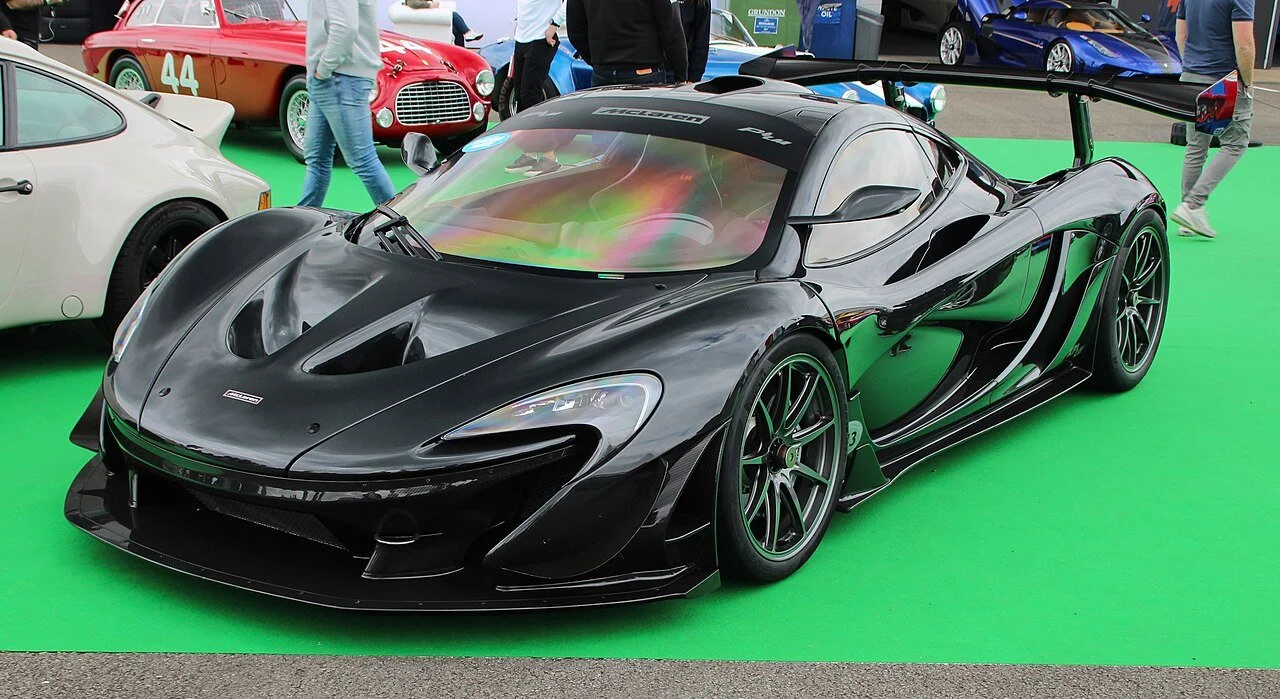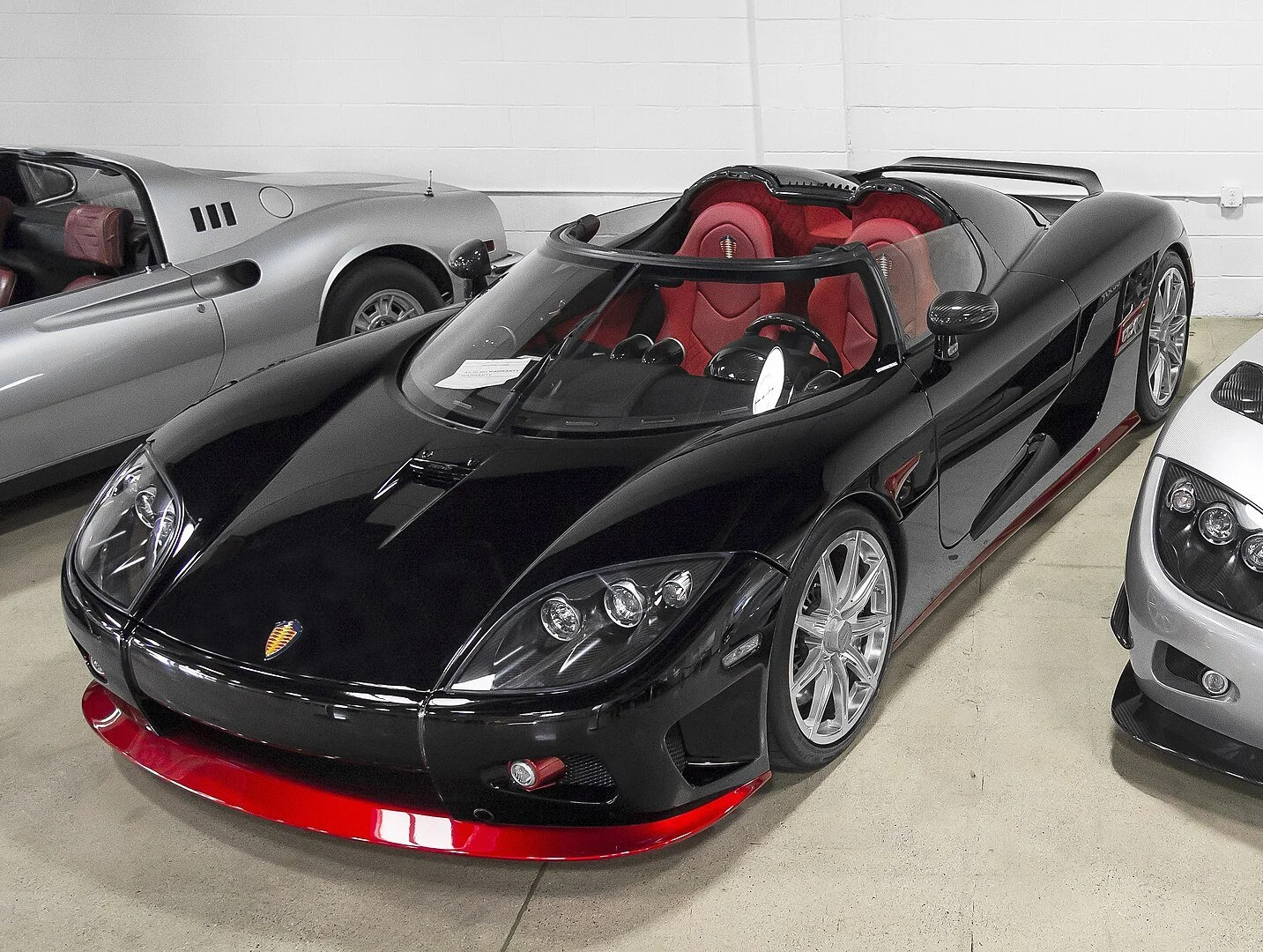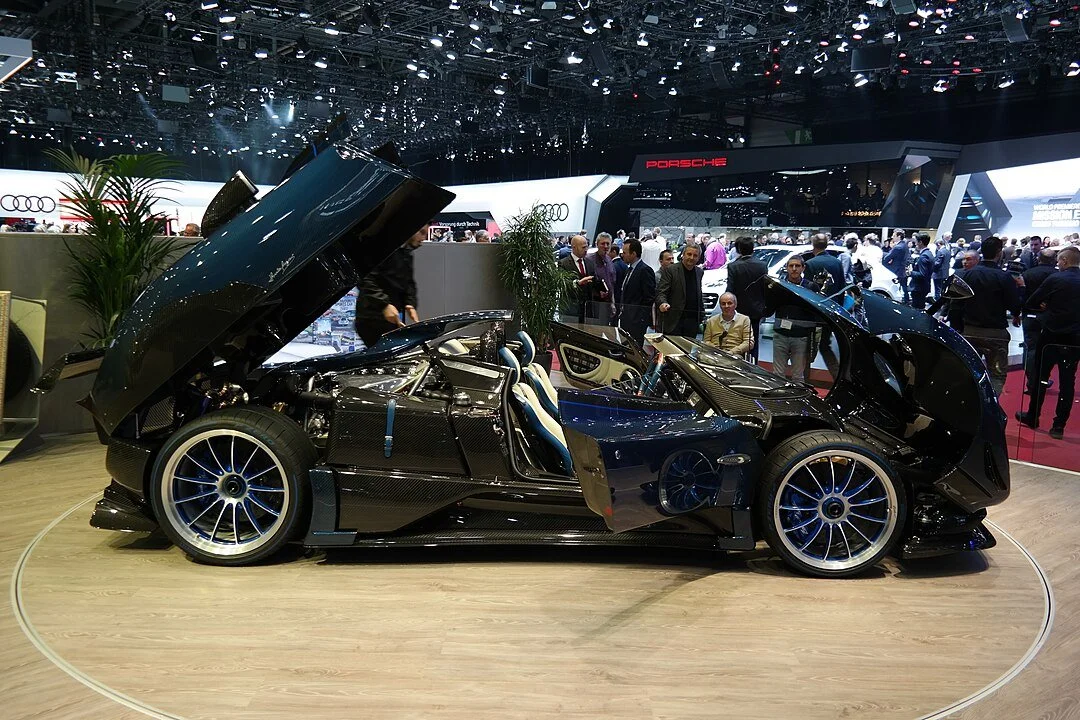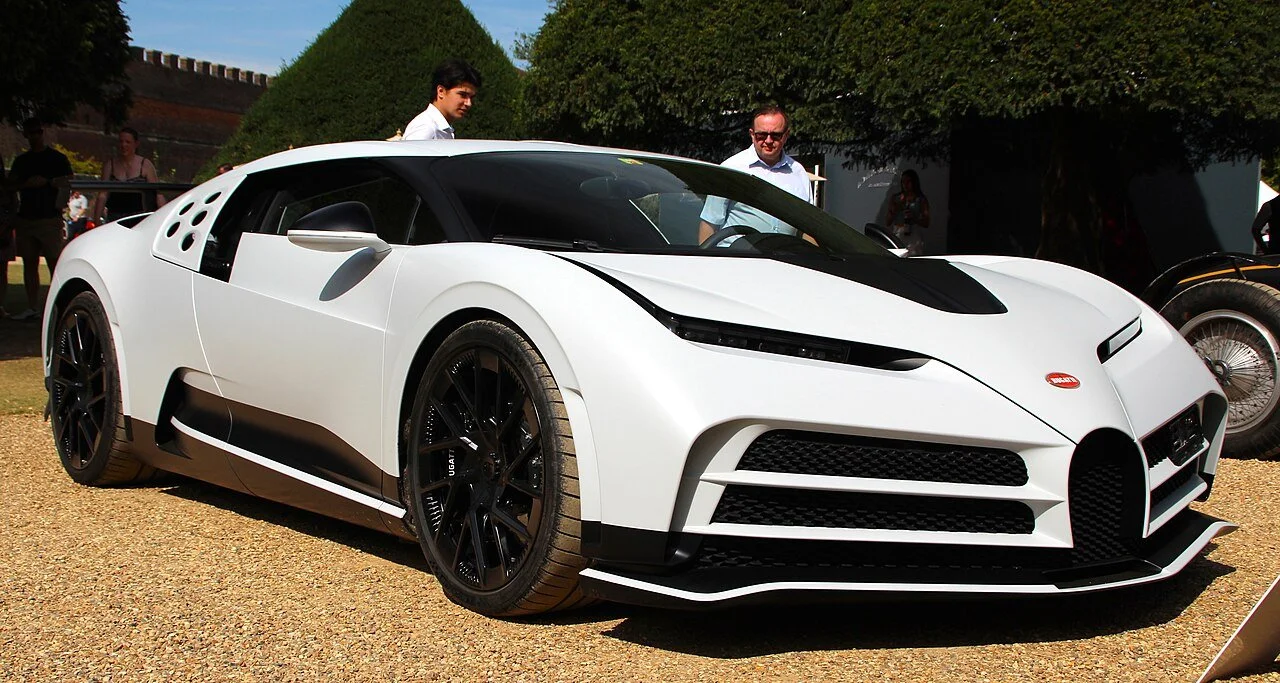Die seltensten Hypercars aller Zeiten: Limitierte Meisterwerke der Automobilkunst Teil 2
In einer Welt, in der Exklusivität oft über dem reinen Leistungswert steht, gelten seltene Hypercars als die ultimativen Trophäen für Sammler, Enthusiasten und Visionäre. Wer ein Fahrzeug dieser Klasse besitzt, hält weit mehr in den Händen als nur ein Fortbewegungsmittel – er besitzt ein Stück Geschichte, Technik auf höchstem Niveau und ein Symbol für Fortschritt, Individualität und Prestige.
Nachdem wir im ersten Teil bereits Ikonen wie den Bugatti La Voiture Noire, den Koenigsegg CCXR Trevita oder die Zonda HP Barchetta vorgestellt haben, geht es nun weiter mit dem zweiten Teil unserer Auswahl. Auch hier gilt: Jedes Modell verfügt über mindestens 1.000 PS, wurde nur in winziger Stückzahl gebaut und ist unter Sammlern weltweit begehrter als jede Aktie.
Den Anfang macht ein Fahrzeug, das nicht nur durch seine Seltenheit, sondern auch durch seine extreme Konzeption und Nähe zum Motorsport für Aufsehen sorgt – der Bugatti Bolide.
6. Bugatti Bolide – Der kompromisslose Extremist aus Molsheim
Stückzahl 40
Stückzahl 40
Als Bugatti im Jahr 2020 das Konzeptfahrzeug Bolide vorstellte, traute die Fachwelt kaum ihren Augen: Ein Fahrzeug, das nicht für die Straße, sondern ausschließlich für die Rennstrecke gebaut wurde – radikaler, leichter und stärker als alles, was zuvor aus Molsheim kam. Mit dem Serienstart im Jahr 2024 wurde klar: Der Bugatti Bolide ist kein Showcar, sondern ein technisches Meisterwerk – und mit nur 40 Exemplaren weltweit eines der seltensten Hypercars aller Zeiten.
Design: Funktion über Form – und doch spektakulär
Der Bolide ist in seiner Gestaltung kompromisslos auf Aerodynamik und Leichtbau ausgerichtet. Das Monocoque besteht vollständig aus Kohlefaserverbundstoff, ebenso wie nahezu jedes sichtbare Karosserieteil. Der zentrale Lufteinlass auf dem Dach wird bei steigender Geschwindigkeit aktiv abgesenkt, um den Luftstrom zu optimieren – ein Detail, das selbst in der Formel 1 selten ist.
Auffälligstes Designelement ist die sogenannte "X-Signatur": Front- und Heckleuchten formen ein stilisiertes X, inspiriert von Experimentalfahrzeugen der Luftfahrt. Der gesamte Auftritt ist weniger elegant als brutal – und genau das war beabsichtigt.
Antrieb: W16 in Höchstform
Im Bugatti Bolide arbeitet eine weiterentwickelte Version des ikonischen 8,0-Liter-W16-Quad-Turbo-Motors, der hier sagenhafte 1.600 PS bei 7.000 U/min leistet – mit Rennkraftstoff sogar bis zu 1.850 PS. Das maximale Drehmoment liegt bei 1.600 Nm. Dabei wiegt das Fahrzeug nur 1.450 Kilogramm, was ein Leistungsgewicht von 0,9 kg/PS ergibt – ein Spitzenwert in der Geschichte des Motorsports.
Die Kraftübertragung erfolgt über ein sequentielles Renngetriebe, das speziell für den Trackeinsatz entwickelt wurde. Die Beschleunigungswerte: 0–100 km/h in 2,2 Sekunden, 0–300 km/h in unter 12 Sekunden – mit einer theoretischen Höchstgeschwindigkeit von über 500 km/h.
Fahrwerk & Performance
Bugatti hat dem Bolide eine vollständig neue Fahrwerksarchitektur verpasst, mit Pushrod-Federung, maßgefertigten Dämpfern und einem aktiven Aerodynamiksystem. Die Kohlefaser-Keramik-Bremsanlage ist auf Belastungen jenseits von Le-Mans-Niveau ausgelegt.
Der Abtrieb bei 320 km/h beträgt über 2.600 Kilogramm – mehr als das Doppelte des Fahrzeuggewichts. Die Reifen wurden speziell von Michelin entwickelt und sind identisch mit denen, die bei Le-Mans-Prototypen verwendet werden. Jeder Käufer erhält zudem Zugang zu exklusiven Trackdays und Fahrprogrammen auf abgesperrten Rennstrecken.
Interieur: Purismus trifft Renntechnik
Im Cockpit des Bolide herrscht absolute Funktionalität. Statt Luxus gibt es hier Rennsportsitze, ein abnehmbares Lenkrad mit digitalem Multifunktionsdisplay und ein Telemetrie-Modul zur Datenanalyse in Echtzeit. Der Fahrer sitzt wie in einem LMP1-Fahrzeug tief eingebettet im Monocoque.
Details wie Sechs-Punkt-Gurte, integrierte Feuerlöschsysteme, Crashstruktur nach FIA-Vorgaben und Rennhelmhalterungen unterstreichen den kompromisslosen Track-Only-Charakter.
Preis & Exklusivität
Der Einstiegspreis für einen Bugatti Bolide liegt bei rund 4 Millionen Euro netto – ohne Optionen. Alle 40 Exemplare waren bereits vor Produktionsstart ausverkauft. Viele Fahrzeuge wurden an Sammler verkauft, die bereits mehrere Bugatti-Modelle in ihrer Sammlung haben. Die Auslieferung erfolgt individuell mit begleitendem Engineering-Team.
Fazit
Der Bugatti Bolide ist ein technisches Manifest: So kompromisslos, so brutal und so exklusiv wurde selten ein Fahrzeug gebaut. Mit seiner geringen Stückzahl, dem extremen Leistungsniveau und seiner Nähe zum Rennsport zählt der Bolide zweifellos zu den seltensten und faszinierendsten Hypercars aller Zeiten – und zu den krassesten Manifestationen von Ingenieurskunst aus Molsheim.
7. McLaren P1 LM – Die Straßenlegende mit Le-Mans-DNA
Stückzahl 5
Stückzahl 5
Der McLaren P1 LM ist das Ergebnis eines einzigartigen Projekts, bei dem Motorsporttechnik kompromisslos auf die Straße gebracht wurde. Als Weiterentwicklung des P1 GTR – dem Track-Only-Derivat des Serien-P1 – wurde der P1 LM von der britischen Firma Lanzante für den Straßenverkehr homologiert. Das Resultat: eines der extremsten und gleichzeitig seltensten Hypercars aller Zeiten, von dem lediglich fünf Exemplare existieren.
Historie und Herkunft
Die Basis für den P1 LM ist der McLaren P1 GTR, der selbst nur für eine exklusive Kundengruppe gedacht war. Lanzante, bekannt für die Betreuung von McLaren-Rennprojekten (u.a. dem Le-Mans-Sieg 1995), entwickelte gemeinsam mit McLaren Special Operations (MSO) ein Straßenzulassungskonzept für genau fünf Fahrzeuge – individuell angepasst und mit umfassender technischer Überarbeitung.
Antrieb und Leistung
Unter der Haube arbeitet ein Hybridantrieb, bestehend aus einem 3,8-Liter-V8-Biturbo und einem Elektromotor. Im Gegensatz zum serienmäßigen P1 leistet der LM deutlich mehr – 1.000+ PS Gesamtleistung. Die elektrische Unterstützung wurde gezielt optimiert, um das Ansprechverhalten zu verbessern und die Effizienz bei maximaler Leistungsausbeute zu erhöhen.
Technische Eckdaten:
Motor: 3,8-Liter V8 Biturbo + E-Motor
Systemleistung: >1.000 PS
0–100 km/h: ca. 2,4 Sekunden
Top-Speed: über 350 km/h
Getriebe: 7-Gang-Doppelkupplung
Leichtbau und Performance
Der P1 LM wiegt durch konsequente Diätmaßnahmen rund 60 kg weniger als der P1 GTR. Der Innenraum wurde entkernt, das Fahrwerk überarbeitet und alle aeroaktiven Komponenten für den Straßeneinsatz justiert. Trotzdem blieb das markante GTR-Flügelwerk erhalten – inklusive riesigem Heckspoiler, Diffusorpaket und vergrößertem Frontsplitter.
Besondere Details:
Titan-Auspuffanlage
Plexiglas-Fensteroption
Leichte Racing-Sitze mit F1-Gurten
Gold-beschichtete Hitzeschilde im Motorraum
Cockpit und Fahrerlebnis
Im Innenraum dominiert funktionale Rennsport-Ästhetik. Das Lenkrad erinnert an ein F1-Steuergerät, alle Anzeigen sind digital und auf Performance fokussiert. Die Sitze stammen direkt aus dem GTR-Programm und bieten kompromisslosen Halt bei hoher Querbeschleunigung. Die Geräuschkulisse ist roh, der Charakter puristisch – ein Erlebnis, das an einen GT1-Rennwagen erinnert.
Exklusivität und Sammlerwert
Mit nur fünf gebauten Fahrzeugen ist der McLaren P1 LM eine absolute Rarität. Alle Fahrzeuge wurden bereits vor Fertigstellung verkauft, teils an bekannte Sammler. Einer der LM stellte 2017 einen Rekord für das schnellste straßenzugelassene Fahrzeug auf der Nürburgring Nordschleife auf – in 6:43,2 Minuten (inoffiziell).
Der Marktwert eines P1 LM liegt heute bei geschätzten 6–10 Millionen Euro, Tendenz steigend.
Fazit
Der McLaren P1 LM ist ein Paradebeispiel dafür, wie nah moderne Hypercars an echte Rennfahrzeuge heranrücken können – und das mit Straßenzulassung. Die Kombination aus limitierter Stückzahl, purer Performance und Motorsport-Geschichte macht ihn zu einem der seltensten und gleichzeitig faszinierendsten Hypercars der Welt. Wer einen besitzt, braucht keine weitere Erklärung – nur einen Ort zum Fahren.
8. Koenigsegg CCXR Trevita – Diamant auf vier Rädern
Stückzahl 2
Stückzahl 2
In der Welt der Hypercars ist der schwedische Hersteller Koenigsegg für seine kompromisslose Technik, ultraleichte Bauweise und rekordverdächtige Leistung bekannt. Doch der Koenigsegg CCXR Trevita sticht selbst unter den extremsten Modellen der Marke hervor. Mit nur zwei produzierten Exemplaren weltweit ist er nicht nur eines der seltensten Fahrzeuge aller Zeiten, sondern auch eines der extravagantesten.
Der Name: "Trevita"
"Trevita" steht im Schwedischen für "drei Weiße" – eine Anspielung auf die spezielle Karosseriefarbe, die aus diamantbeschichteter Kohlefaser besteht. Koenigsegg entwickelte ein einzigartiges Verfahren, um Kohlefaser in einem schimmernden Weiß-Ton zu fertigen – etwas, das kein anderer Hersteller jemals serienreif umsetzen konnte.
Das Ergebnis ist ein Fahrzeug, das in der Sonne wie mit Diamantstaub überzogen wirkt – und das weltweit auf zwei Stück limitiert ist.
Antrieb: Kraft im Überfluss
Wie der reguläre CCXR basiert auch der Trevita auf einem modifizierten 4,8-Liter-V8-Biturbo-Motor, der mit Bioethanol betrieben werden kann. Die Leistung liegt bei 1.018 PS und einem maximalen Drehmoment von über 1.080 Nm. In Verbindung mit dem ultraleichten Karbon-Monocoque erreicht der Trevita ein Leistungsgewicht, das mit Formel-1-Fahrzeugen konkurriert.
Technische Daten:
Motor: 4,8-Liter V8 Biturbo, flexfuel
Leistung: 1.018 PS bei 7.000 U/min
0–100 km/h: 2,9 Sekunden
Top-Speed: über 410 km/h
Getriebe: sequentielles 6-Gang-Renngetriebe
Fahrwerk und Technik
Der Trevita besitzt ein voll einstellbares Rennsportfahrwerk mit Triplex-Hinterachse, das sowohl auf Straße als auch auf abgesperrtem Asphalt höchste Stabilität garantiert. Die Bremsen bestehen aus Carbon-Keramik mit Koenigsegg-Monoblock-Bremssätteln, das ESC-System ist speziell für Trackday-Tuning ausgelegt.
Ein aerodynamisches Paket mit aktivem Spoiler, Frontsplitter und Luftleitkanälen sorgt für stabilen Abtrieb auch bei Höchstgeschwindigkeit.
Interieur: Edel und funktional
Der Innenraum ist überraschend komfortabel für ein Fahrzeug dieser Extremklasse. Edles Leder, Aluminium und Sichtkarbon dominieren das Ambiente. Jeder Trevita wurde individuell gefertigt – mit personalisierten Ziffernblättern, gestickten Initialen und maßgefertigter Mittelkonsole. Ein digitales Kombiinstrument und das bekannte Koenigsegg-Infotainmentsystem mit Touchscreen runden das Cockpit ab.
Berühmte Besitzer und Marktwert
Einer der beiden Trevitas gehörte dem US-Boxchampion Floyd Mayweather, der das Fahrzeug für über 4 Millionen Dollar kaufte. Der zweite blieb in Europa und wird von seinem Besitzer nur zu ausgesuchten Events bewegt. Der aktuelle Marktwert liegt bei geschätzten 6–7 Millionen Euro, Tendenz steigend.
Fazit
Der Koenigsegg CCXR Trevita ist mehr als ein Supersportwagen – er ist ein fahrbares Juwel. Seine technische Raffinesse gepaart mit seiner unvergleichlichen Exklusivität machen ihn zu einem der begehrtesten Hypercars unserer Zeit. Wer ihn live sieht, erlebt nicht nur ein Meisterwerk der Technik, sondern auch eine Skulptur aus Carbon, Licht und Geschwindigkeit.
9. Pagani Zonda HP Barchetta – Der Höhepunkt italienischer Kunstfertigkeit
Stückzahl 3
Stückzahl 3
Wenn sich Pagani selbst ein Denkmal setzt, entsteht etwas Einzigartiges. Die Zonda HP Barchetta ist ein Paradebeispiel für diese Philosophie: Ein ultimativer, offener Hypercar auf Zonda-Basis – limitiert auf nur drei Fahrzeuge weltweit, gebaut als Hommage an den ursprünglichen Zonda und zugleich zum 60. Geburtstag von Firmenchef Horacio Pagani.
Ein Design wie aus einem Traum
Die Zonda HP Barchetta ist eine skulpturale Inszenierung italienischer Handwerkskunst. Ganz ohne Dach und mit einer stark verkürzten Windschutzscheibe strahlt sie pure Freiheit und Extreme aus. Die asymmetrische Heckverkleidung, das freiliegende Carbon, die blauen Akzente und die klassischen, teilweise geschlossenen Hinterräder sind visuelle Anspielungen auf vergangene Zonda-Modelle.
Besondere Designdetails:
Karosserie vollständig aus Sichtcarbon
3-teilige Schmiedefelgen mit Zentralschraube
Glasflächen in der Seitensilhouette
Keine Dachoption, keine Scheibenheber – pure Barchetta-Form
Technik & Antrieb: Altbewährtes auf Maximum
Unter der Haube arbeitet der legendäre 7,3-Liter-V12-Saugmotor von AMG, der in der HP Barchetta seine wohl emotionalste Inkarnation findet. Die Leistung wurde auf 789 PS angehoben – kombiniert mit einem manuellen 6-Gang-Schaltgetriebe, das direkt mit der Hinterachse verbunden ist.
Technische Eckdaten:
Motor: 7,3-Liter AMG V12 Saugmotor
Leistung: 789 PS bei über 6.000 U/min
0–100 km/h: ca. 3,1 Sekunden
Top-Speed: ca. 355 km/h
Getriebe: 6-Gang manuell
Antrieb: Hinterrad
Trotz seines Gewichts von rund 1.250 kg bleibt die HP Barchetta ein äußerst agiles Fahrzeug – auch dank handgefertigtem Titanfahrwerk und Kohlefaser-Chassis.
Interieur: Haute Couture auf Rädern
Der Innenraum wirkt wie ein Mix aus Rennwagen-Cockpit und italienischer Maßschneiderei. Blaue Lederbänder, freiliegende Titanverschraubungen, gebürstetes Aluminium, Leder und Sichtcarbon dominieren. Jedes Detail ist einzigartig und auf den Besitzer zugeschnitten.
Besonderheiten im Cockpit:
Offene Schaltkulisse mit Titanschaltknauf
Leder in Pagani-Blau, kombiniert mit weißem Alcantara
Retro-inspirierte Rundinstrumente mit analoger Tachoeinheit
Horacio Paganis Unterschrift auf Lenkradplakette und Schwellerplatte
Exklusivität & Preis
Nur drei Fahrzeuge wurden gebaut – eines davon für Horacio Pagani selbst. Die beiden anderen gingen an langjährige Sammler und wurden für über 15 Millionen Euro gehandelt – was sie zu den teuersten Pagani-Fahrzeugen aller Zeiten macht.
Die Zonda HP Barchetta ist nicht nur selten, sondern auch ein Symbol für Paganis Philosophie: Technik als Kunst, Leistung als Emotion, und Limitierung als Botschaft.
Fazit
Die Pagani Zonda HP Barchetta ist nicht nur ein Auto – sie ist ein Kunstwerk. Ein Fahrzeug, das den ultimativen Ausdruck von Individualität, Handwerkskunst und Leistung darstellt. Wer sie besitzt, fährt nicht – er inszeniert. Und wer sie sieht, versteht, dass es im Hypercar-Olymp nicht nur um Zahlen geht – sondern um Seele.
10. Bugatti Centodieci – Die Hommage an eine Ikone
Stückzahl 10
Stückzahl 10
Mit dem Bugatti Centodieci präsentierte der französische Hersteller 2020 eines der exklusivsten Modelle seiner modernen Geschichte – als Reverenz an den legendären Bugatti EB110 aus den 1990er Jahren. Limitiert auf nur 10 Fahrzeuge weltweit, gehört der Centodieci zu den rarsten Hypercars mit W16-Antrieb – und gleichzeitig zu den begehrtesten Sammlerstücken der Neuzeit.
Design: Zeitreise ins moderne Bugatti-Zeitalter
Optisch hebt sich der Centodieci bewusst vom Chiron und anderen Bugatti-Derivaten ab. Die Silhouette orientiert sich an der Formensprache des EB110, inklusive der ikonischen C-Säulen-Lüftungseinlässe und der flachen, keilförmigen Front.
Designdetails:
LED-Matrixscheinwerfer mit senkrechtem Leuchtband
Aktiver Heckflügel im Stil der 90er Jahre
Sichtcarbon-Teile mit matter Beschichtung
Exklusive Felgendesigns und Zweifarb-Lackierungen
Die Karosserie besteht vollständig aus ultraleichtem Karbon. Jedes Fahrzeug wurde von Hand in Molsheim gefertigt – in rund 2.000 Arbeitsstunden pro Stück.
Technik: W16 in Hochform
Der Centodieci basiert technisch auf dem Bugatti Chiron, erhielt aber eine Leistungssteigerung sowie eine modifizierte Aerodynamik. Sein 8,0-Liter-W16-Quad-Turbo-Motor leistet 1.600 PS, also 100 PS mehr als der Chiron.
Technische Eckdaten:
Motor: 8,0-Liter W16 Quad-Turbo
Leistung: 1.600 PS
0–100 km/h: 2,4 Sekunden
Top-Speed: elektronisch begrenzt auf 380 km/h
Getriebe: 7-Gang-Doppelkupplung
Antrieb: Allrad
Trotz der enormen Leistung ist der Centodieci 20 kg leichter als der Chiron – und auf maximale Exklusivität statt Rekorde getrimmt.
Innenraum: Individualisierung als Kunstform
Das Interieur des Centodieci ist vollständig auf den Kunden zugeschnitten. Leder, Alcantara, Aluminium und Carbon dominieren – mit Farbwahl, Stickmustern und Applikationen nach Wunsch.
Ausstattungsmerkmale:
Konfigurierbares Digitaldisplay mit Performance-Modi
Maßgeschneiderte Sitze mit exklusivem Nahtmuster
„Centodieci“-Schriftzüge auf Kopfstützen, Tacho und Türverkleidungen
Soundsystem mit Raumklangmodulierung
Preis & Sammlerwert
Alle 10 Fahrzeuge waren innerhalb weniger Wochen nach Vorstellung vergeben – zu einem Stückpreis von über 8 Millionen Euro netto. Die Nachfrage ist seither explodiert, was den Centodieci zu einem der gefragtesten modernen Sammlerfahrzeuge macht. Einzelstücke wurden bereits für bis zu 12 Millionen Euro gehandelt.
Fazit
Der Bugatti Centodieci ist mehr als ein Hypercar – er ist eine Brücke zwischen Vergangenheit und Zukunft. Als technische Hommage an eine Ikone konzipiert, bringt er alles mit, was einen modernen Bugatti ausmacht: schiere Leistung, höchste Exklusivität und ein Design, das Emotionen weckt. Ein würdiger Nachfolger des EB110 – und eines der seltensten W16-Fahrzeuge der Automobilgeschichte.
Bonus: 11. Bugatti La Voiture Noire – Die schwarze Legende
Stückzahl 1
Stückzahl 1
Als Bugatti 2019 auf dem Genfer Autosalon ein in tiefschwarzem Sichtcarbon gehaltenes Einzelstück enthüllte, war klar: Hier entsteht ein Mythos. Der Bugatti La Voiture Noire ist ein absolutes Unikat – ein Hommage-Modell an den verschollenen Typ 57 SC Atlantic von Jean Bugatti. Mit einem kolportierten Preis von über 11 Millionen Euro netto ist er nicht nur eines der teuersten Neuwagen aller Zeiten, sondern zweifellos auch eines der exklusivsten.
Design: Eleganz, Skulptur, Dunkelheit
Der Name „La Voiture Noire“ – zu Deutsch „das schwarze Auto“ – ist Programm. Die Karosserie besteht vollständig aus hochglanzpoliertem Sichtcarbon, eingefärbt in tiefem Schwarz. Die Formensprache ist bewusst fließend und erinnert an klassische Art-Déco-Designlinien.
Designmerkmale:
Durchgehendes LED-Leuchtenband am Heck
Sechs-fache Endrohr-Konfiguration
Radlaufverkleidungen mit polierten Alu-Akzenten
Dachwölbung mit zentralem Rückgrat als Hommage an den Typ 57 SC
Technik & Antrieb
Technisch basiert La Voiture Noire auf dem Bugatti Chiron, allerdings mit zahlreichen Sonderanpassungen. Der W16-Motor liefert eine Leistung von 1.500 PS und ein maximales Drehmoment von 1.600 Nm.
Technische Eckdaten:
Motor: 8,0-Liter W16 Quad-Turbo
Leistung: 1.500 PS
0–100 km/h: ca. 2,4 Sekunden
Top-Speed: elektronisch begrenzt, >400 km/h theoretisch möglich
Antrieb: Allrad
Trotz identischer Basis unterscheiden sich Aerodynamik, Kühlung und Auspuffanlage vollständig vom Serien-Chiron.
Interieur: Maßarbeit auf höchstem Niveau
Über das Interieur ist wenig bekannt – da es ein Einzelstück ist, wurde es vollständig auf den Käufer abgestimmt. Erwartet werden seltene Materialien wie Titan, poliertes Aluminium, dunkles Ebenholz und handverlesenes Leder.
Besonders: Alle Knöpfe und Bedienelemente sollen aus Vollmetall gefertigt sein. Das Lenkrad trägt – laut Insidern – eine Plakette mit der Signatur von Jean Bugatti.
Der Mythos hinter dem Namen
Der Name spielt auf das einzige verlorengegangene Bugatti-Modell der Welt an: den Typ 57 SC Atlantic von Jean Bugatti, der seit dem Zweiten Weltkrieg verschollen ist. La Voiture Noire ist dessen moderne Reinkarnation – ein Denkmal auf Rädern.
Marktwert & Bedeutung
Mit einem Preis von rund 11 Millionen Euro netto war La Voiture Noire bei seiner Vorstellung der teuerste Neuwagen der Welt. Der Käufer wurde nie öffentlich genannt – Gerüchte nennen unter anderem Ferdinand Piëch, Lionel Messi oder ein Golfstaaten-Monarch.
Heute wird der Wiederverkaufswert auf über 14 Millionen Euro geschätzt.
Fazit
Der Bugatti La Voiture Noire ist weit mehr als ein Hypercar. Er ist Kunstwerk, Denkmal, Legende. Als Einzelstück mit Historienbezug, maximaler Handwerkskunst und überragender Technik ist er der Inbegriff von Exklusivität – ein Fahrzeug, das es so nie wieder geben wird.
Tipps für Sammler: Wie kommt man an limitierte Hypercars?
Die vorgestellten Modelle wecken bei jedem Autoliebhaber Begehrlichkeiten. Doch wie stellt man es an, solch ein seltenes Stück zu ergattern? Hier einige Tipps für angehende Sammler:
Beziehungen zum Hersteller aufbauen: Viele dieser Fahrzeuge (insbesondere Ferrari FXX-K, Bugatti-Sondermodelle etc.) werden nur an ausgewählte Stammkunden verkauft. Wer etwa einen Ferrari LaFerrari oder mehrere Ferraris besitzt, wurde bevorzugt zum Kauf des FXX-K eingeladen. Tipp: Pflegen Sie eine Historie als treuer Kunde – kaufen Sie limitierte Serienmodelle, besuchen Sie Werksveranstaltungen. Loyalität zahlt sich aus, wenn neue Hypercars angekündigt werden.
Spezialisierte Händler und Makler kontaktieren: Es gibt weltweit einige wenige Händler, die sich auf die Vermittlung von Hypercar-Raritäten spezialisiert haben. Ein Beispiel sind Auktionshäuser wie RM Sotheby’s, Gooding oder spezialisierte Makler, die diskret Privatverkäufe arrangieren. Recherche ist essentiell – oft werden Angebote nicht öffentlich inseriert, sondern hinter verschlossenen Türen vermittelt.
Auktionen verfolgen: Immer wieder taucht mal ein seltenes Hypercar auf Auktionen auf – sei es aus Nachlässen oder Sammlungsauflösungen. Hier ist jedoch finanzielle Schlagkraft und Fachwissen gefragt. Setzen Sie sich ein Limit und kennen Sie den Marktwert. Zum Beispiel war klar, dass ein McLaren F1 weit über 15 Mio. USD erzielen würde – entsprechend muss man vorbereitet sein.
Zustand und Historie prüfen: Gerade bei so wertvollen Fahrzeugen ist Originalität Gold wert. Ein unfallfreies Exemplar mit lückenloser Dokumentation, idealerweise erster Hand, erzielt immer Spitzenpreise. Vorsicht vor Fahrzeugen mit ungeklärter Vergangenheit oder Modifikationen – diese können den Wert mindern. Im Zweifelsfall ziehen Sie einen unabhängigen Gutachter hinzu.
Wartung und Unterhalt bedenken: Die Anschaffung ist das Eine, der Unterhalt das Andere. Limitierte Hypercars erfordern oft spezielle Betreuung – z.B. müssen Ferrari FXX-K beim Werk gewartet werden, ein Bugatti benötigt regelmäßige Servicepakete, die ins Geld gehen (Reifen, Flüssigkeiten, Einstellungen). Tipp: Kalkulieren Sie hohe laufende Kosten ein und stellen Sie sicher, dass Sie Zugang zu autorisierten Servicepartnern haben.
Netzwerken in der Szene: Sammlerclubs, exklusive Veranstaltungen und Concorso-Wettbewerbe sind ideale Plattformen, um mit Besitzern ins Gespräch zu kommen. Manchmal ergeben sich so Gelegenheiten – vielleicht möchte jemand aus seiner Sammlung ein Stück abgeben. Mundpropaganda und persönliche Kontakte sind in diesem exklusiven Markt viel wert.
Kurz gesagt: Geduld, finanzielle Stärke und das richtige Netzwerk sind die Schlüssel. Es kann Jahre dauern, bis sich die Chance auf ein bestimmtes Modell ergibt. Doch wer passioniert dranbleibt und die oben genannten Tipps beherzigt, erhöht seine Chancen erheblich, eines Tages ein solches Juwel in der eigenen Garage begrüßen zu dürfen.
Warum gewinnen limitierte Hypercars so stark an Wert?
Die exorbitanten Wertsteigerungen mancher Modelle (siehe Veneno, McLaren F1 oder Ferrari-Klassiker) lassen staunen. Doch woran liegt es konkret, dass limitierte Hypercars oft als rollende Wertanlagen gelten? Hier eine Einordnung:
Knappheit und Exklusivität: Das Grundprinzip von Angebot und Nachfrage spielt hier im Extrem. Wenn von einem Modell nur 3, 10 oder 77 Stück existieren, und weltweit aber Hunderte potenzielle Käufer mit genügend Kapital, steigt der Preis zwangsläufig. Rarität macht Dinge begehrenswert – besonders im Luxussegment, wo Käufer sich durch Einzigartigkeit differenzieren möchten.
Emotionaler Wert und Historie: Viele dieser Fahrzeuge haben Geschichten, die ihren Wert steigern. Ein McLaren F1 hat Le-Mans-Ruhm, ein La Voiture Noire knüpft an Bugatti-Mythen an, ein Zonda HP Barchetta ist das persönliche Auto von Horacio Pagani. Diese Narrative verleihen dem Auto eine Seele und steigern die Sammelwürdigkeit. Ein Wagen wird dann nicht nur wegen seiner PS gesammelt, sondern weil er Automobilgeschichte geschrieben hat.
Technische Meilensteine: Einige Hypercars sind Meilensteine der Technik – erster in etwas (z.B. McLaren F1 als schnellster seiner Zeit, Koenigsegg als erster mit Diamond-Carbon), limitierte Editions feiern oft besondere Ereignisse oder Durchbrüche. Sammler mögen Objekte, die epochal sind. Diese Wagen werden dann wie Kunstwerke der Ingenieurskunst betrachtet, mit entsprechendem kulturellem Wert jenseits des reinen Gebrauchswerts.
Investitionsdruck und alternative Anlagen: In Zeiten niedriger Zinsen und volatiler Märkte suchen Vermögende nach stabilen Sachwerten. Seltene Autos haben sich – ähnlich wie Kunst oder Oldtimer – als relativ wertstabil erwiesen. Ein gut gepflegter Ferrari 250 GTO etwa hat seinen Wert über Jahrzehnte vervielfacht und nie signifikant verloren. Dieser Trend hat sich auf moderne Hypercars übertragen. Indizes zeigen zweistellige Prozentwertzuwächse bei seltenen Autos über 10 Jahre (Diversifiziere dein Portfolio mit Autos und anderen Sammlerstücken ...). Dadurch fließt viel Kapital in diesen Markt, was die Preise weiter nach oben treibt.
Exklusiver Genuss und Prestige: Nicht zuletzt bieten diese Fahrzeuge ihren Besitzern natürlich auch etwas, was kein anderer „Sportwagen von der Stange“ bieten kann: Prestige, Anerkennung in Sammlerkreisen, Einladungen zu Top-Events (wer einen FXX-K besitzt, ist automatisch Teil der Ferrari Corse Clienti Welt). Dieser immaterielle Wert – Teil eines exklusiven Clubs zu sein – treibt viele dazu, lieber in ein rareres Modell zu investieren als in mehrere „gewöhnliche“. Man kann sich schließlich nur einmalig von der Masse abheben. Limitierte Hypercars sind Statussymbole auf höchster Ebene.
Natürlich muss man auch sagen: Nicht jedes limitierte Modell steigt automatisch ins Unermessliche. Faktoren wie Zustand, die allgemeine Wirtschaftslage, modische Geschmäcker (Design!) spielen eine Rolle. So verlor Mayweather beim Trevita zunächst Geld – möglicherweise hätte er länger halten sollen. Auch Modelle, deren Limitierung eher künstlich wirkt und die keine Besonderheiten bieten, können floppen. Doch die hier beleuchteten Fahrzeuge vereinen alle positiven Faktoren: äußerst geringe Stückzahl, klangvoller Name, überlegene Technik und emotionale Aufladung.
Für Besitzer bedeutet das: Ein seltener Hypercar ist nicht nur fahrerisch ein Genuss, sondern häufig auch finanziell lohnend. Viele genießen das Beste aus zwei Welten: Sie fahren ihre Autos gelegentlich mit Genuss, wissen aber, dass sie gleichzeitig ein Stück investieren, das eher rarer wird als an Wert zu verlieren. Wichtig ist, diese Wagen zu pflegen und behutsam einzusetzen – dann steht einer Wertsteigerung oft nichts im Wege.
Abschließend lohnt ein Blick auf eine Vergleichstabelle der vorgestellten Modelle, um deren Eckdaten und heutige Werte gegenüberzustellen:
Vergleichstabelle einiger ausgewählter Hypercars
(Quellen: Werksangaben, Presseberichte und Auktionsergebnisse (10 Limited Edition Supercars That Few Have Ever Seen - Rarest.org) (Bugatti’s tribute to the Type 57SC Atlantic costs a whopping $12.44 million - Hagerty Media) (Autos: Diese Exemplare sind nicht nur teuer, sondern echte Raritäten | STERN.de) (What is the price of a used FXX K Evo? - FerrariChat) ($9 million Bugatti Centodieci honors the EB110 supercar - Hagerty Media))
Schlusswort: Die Welt der limitierten Hypercars ist so faszinierend wie exklusiv. Jedes dieser Fahrzeuge bietet eine eigene Kombination aus Technik, Ästhetik und Geschichte. Sie lösen bei Enthusiasten Gänsehaut aus – sei es durch den satten Klang eines V12, den Anblick von Karbonfasern im Sonnenlicht oder die Kenntnis, etwas Außergewöhnliches vor sich zu haben. Gleichzeitig symbolisieren sie die Spitze dessen, was Automobilingenieure zu leisten imstande sind, wenn Budget keine Rolle spielt und Visionen Wirklichkeit werden dürfen.
Für die Besitzer sind es weit mehr als Autos: Es sind leidenschaftliche Sammlerstücke, Investitionen und Statussymbole zugleich. Für uns Betrachter bleiben sie Traumwagen, die uns daran erinnern, warum wir Autos lieben. Denn sie vereinen das, wofür unser Herz schlägt – atemberaubende Geschwindigkeit, innovatives Design und die Kraft von Visionären, die Unmögliches möglich machen. Limitierte Hypercars gewinnen an Wert, weil sie Werte verkörpern: Mut, Exklusivität, Leidenschaft. Und so werden sie auch in Zukunft die Sammlerherzen höherschlagen lassen – Automobile Träume, in Aluminium, Karbon und Titan gegossen.







